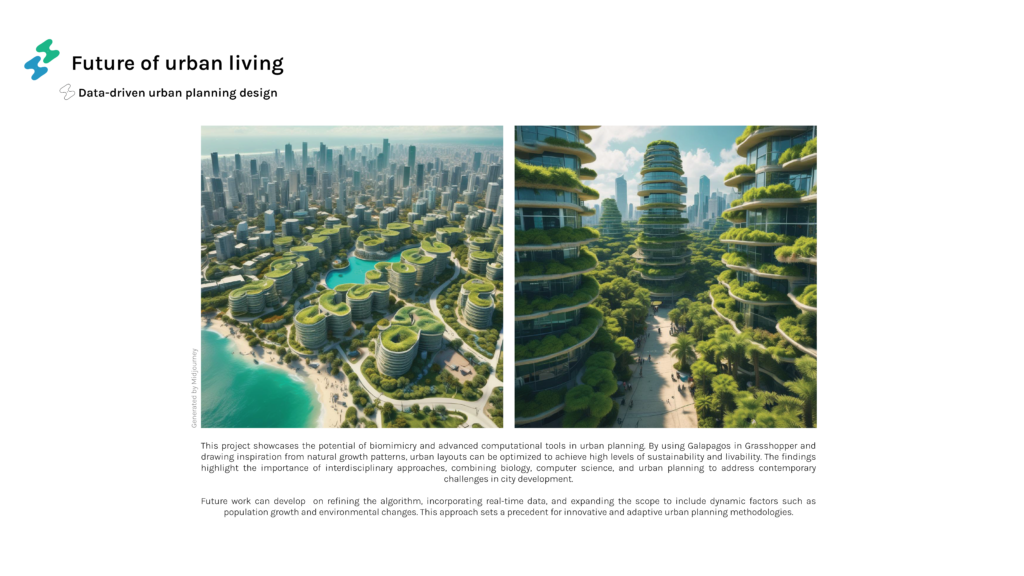Coral growth exhibits fascinating features, particularly in the way it forms patterns that effectively delineate occupied and unoccupied spaces. As the global population and urban areas continue to expand, leveraging these natural growth patterns can provide innovative solutions for urban planning. This project aims to optimize urban zoning by drawing inspiration from brain coral growth and leveraging the Galapagos plugin in Grasshopper to mimic coral growth patterns, with the goal of creating more efficient and livable cities.
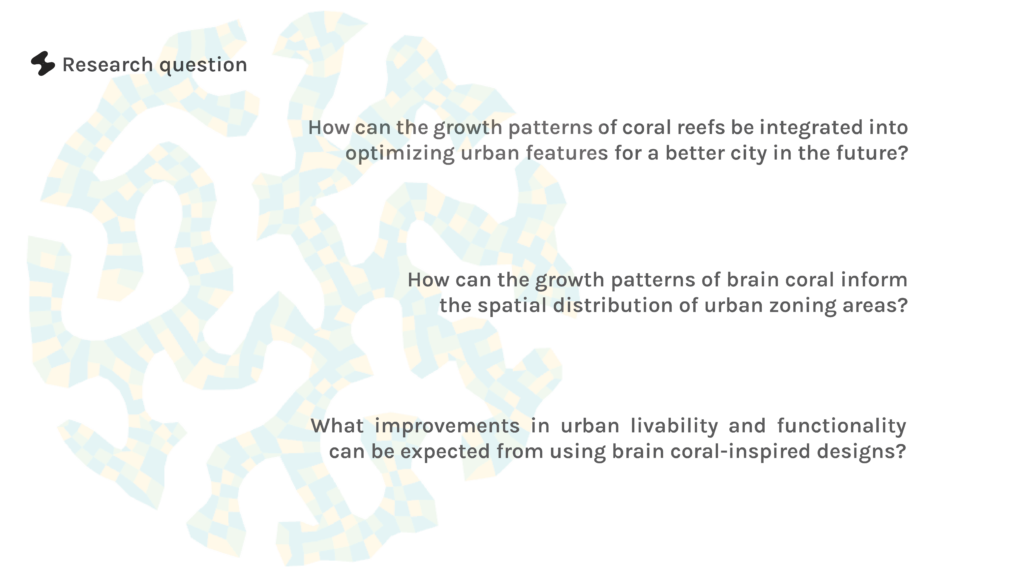
The initial step in achieving this vision involves defining various aspects of urban living, including land use, transportation efficiency, oxygen production, carbon dioxide reduction, and green space allocation. By examining the intricate patterns formed by coral growth, we can develop zoning strategies that maximize space utilization and improve the overall quality of urban environments.
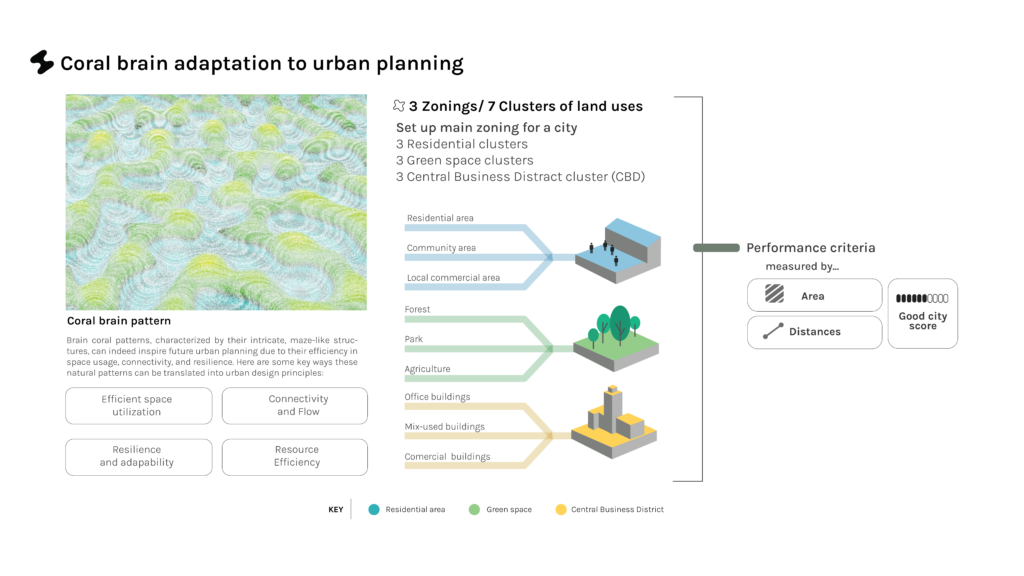
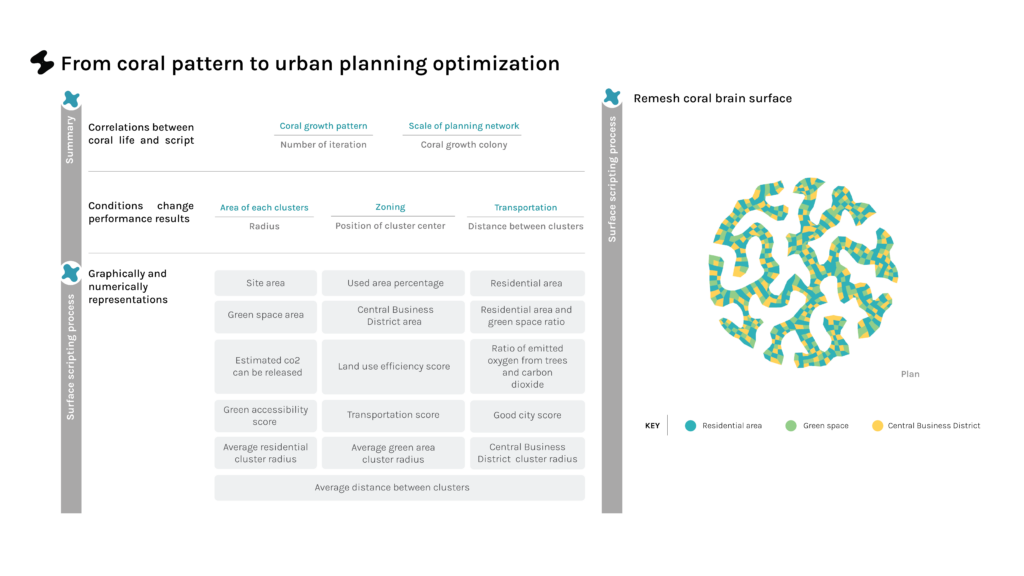
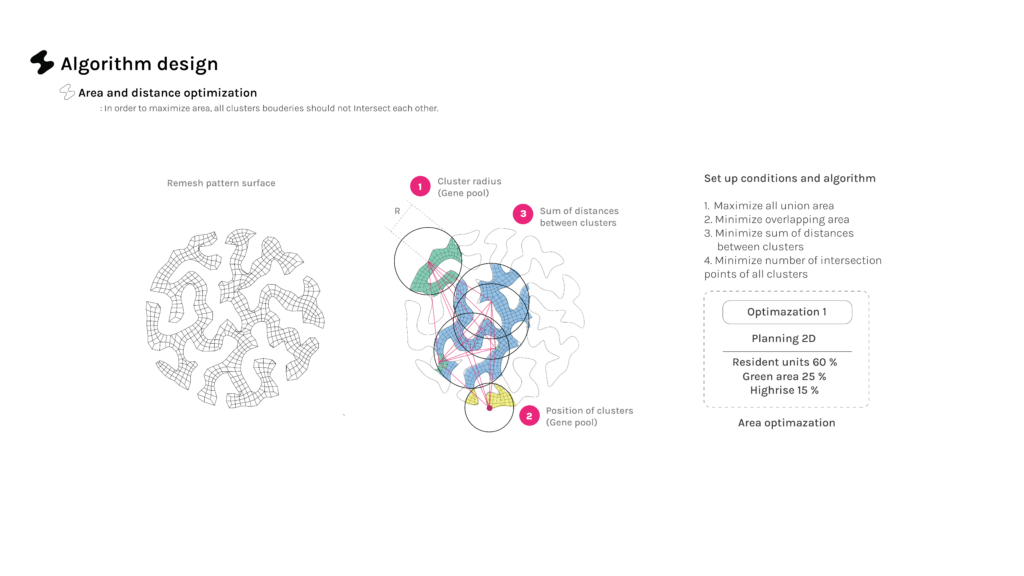
This study represents the initial step towards realizing the vision of an ideal city, encompassing various aspects of urban living. This includes optimizing land use, reducing transportation time, increasing oxygen production, lowering carbon dioxide levels, and expanding green spaces. By drawing inspiration from the natural growth of corals, we aim to create urban layouts that are both efficient and sustainable.
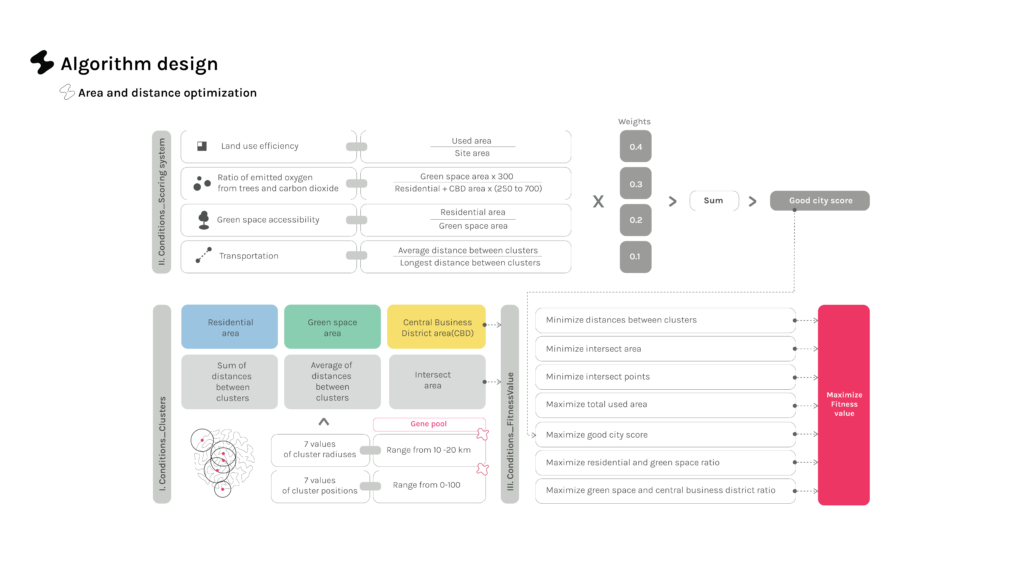
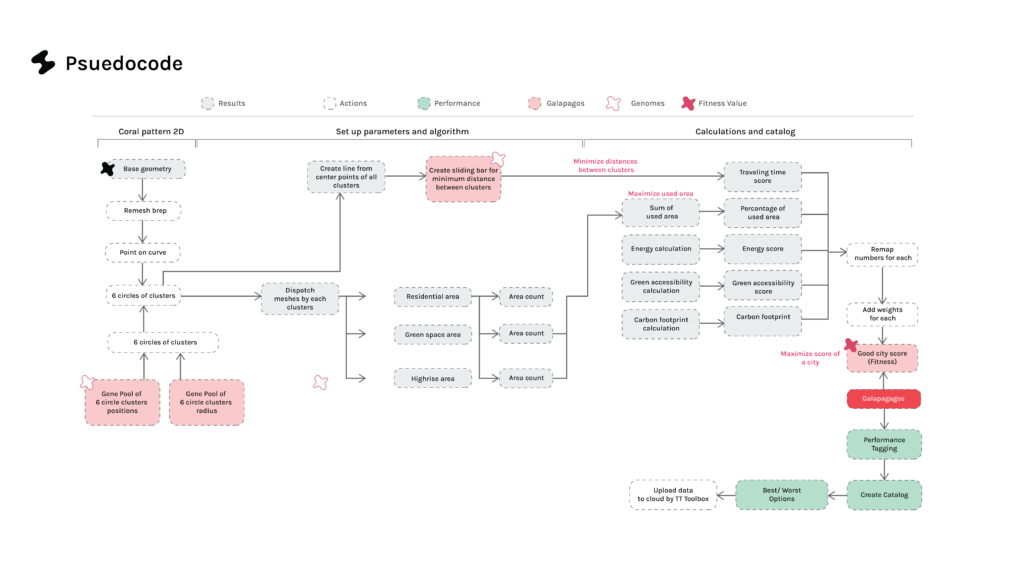
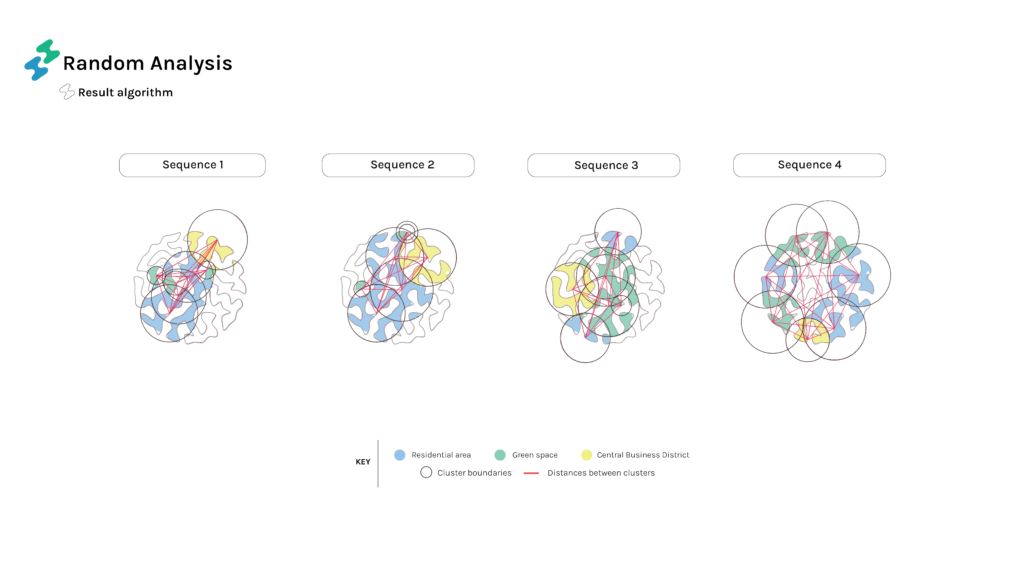
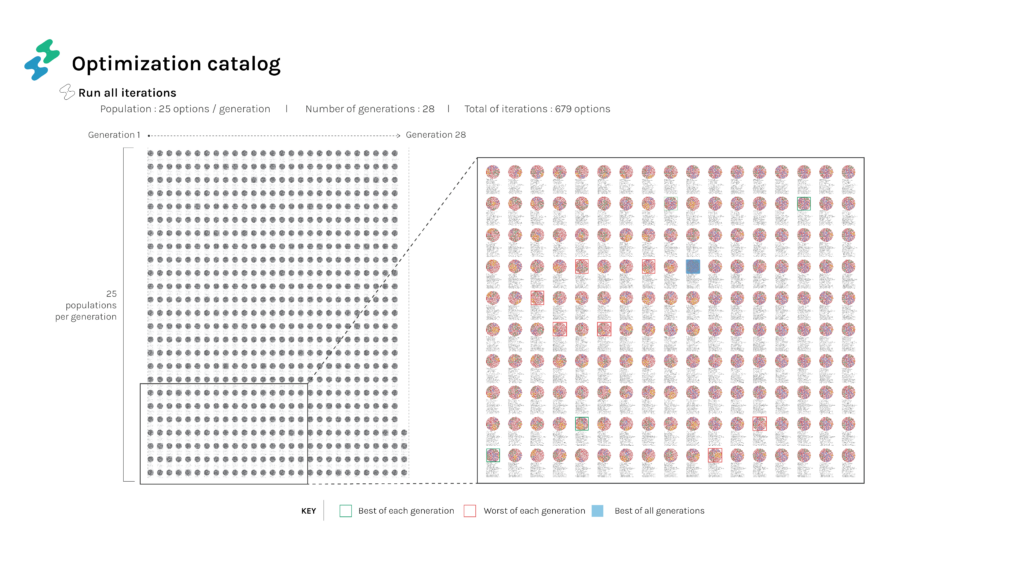
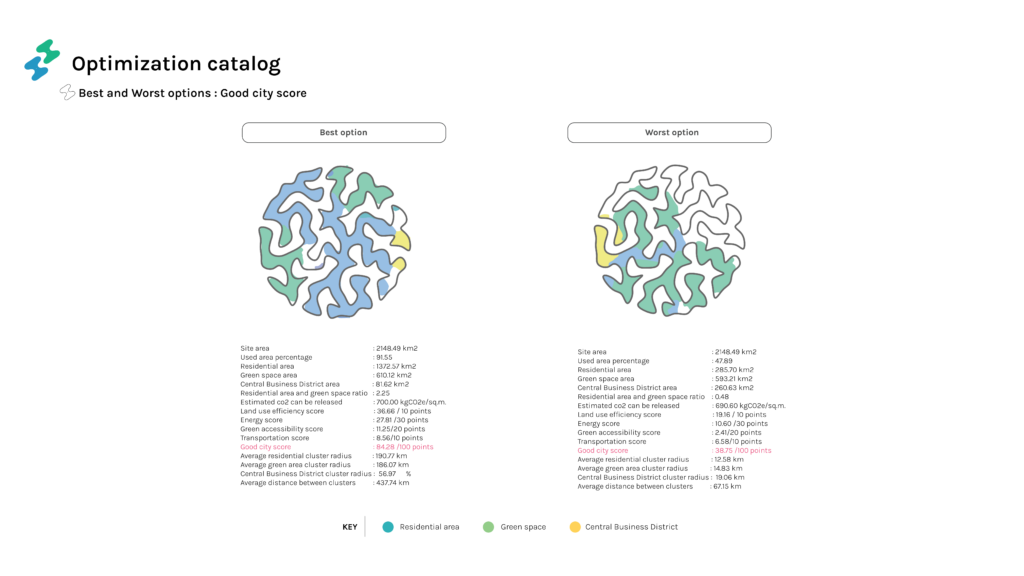
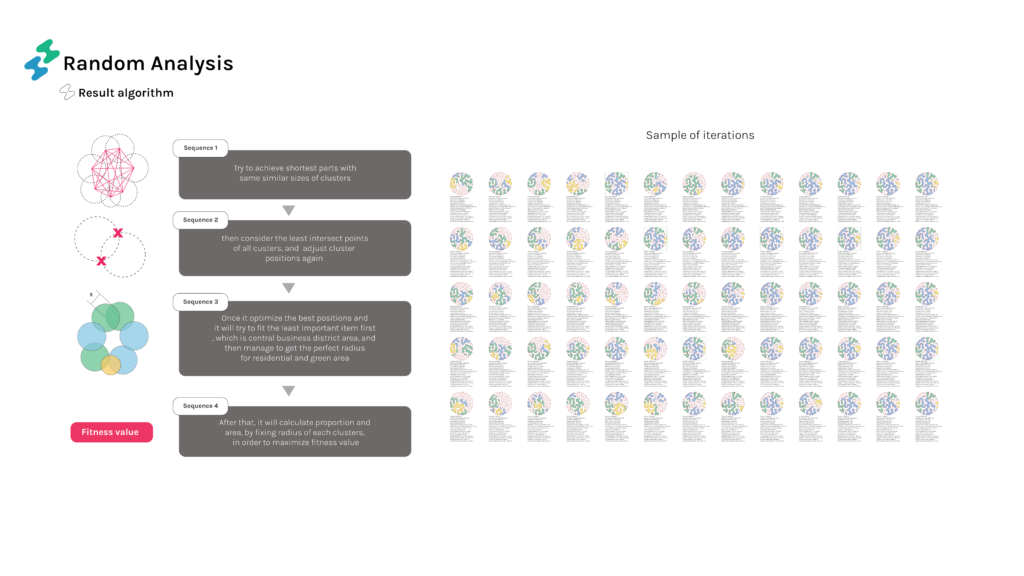
The research process involves a detailed analysis of coral growth and its application to urban planning. This pioneering approach sets the groundwork for their potential benefits and integrating advanced technologies, such as machine learning and AI, to further customize urban designs for diverse contexts.
In the future, the insights gained from this study could revolutionize urban planning, making cities more adaptable and resilient. By merging natural growth algorithms with technological advancements, we can develop urban environments that are better suited to meet the needs of a growing population.
Ultimately, this project aspires to contribute to global urban planning practices, offering a scalable and adaptable framework for creating sustainable and efficient cities. Through continuous innovation and integration of new tools, we aim to pave the way for smarter urban development.
